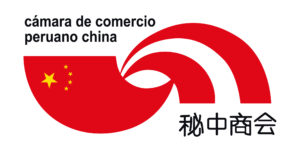The Politics Of Disaster Relief
After a 7.0 magnitude earthquake struck Haiti, the aftershock reached China in ways that few anticipated.The earthquake forced Chinese leaders to navigate the tricky politics of disaster relief.
On December 1, the Inter-American Dialogue, East Consulting, and Cámara de Comercio Peruano-China cohosted a webinar titled “Grading the Pacific Alliance—What Progress on Cross-Pacific Economic Connectivity?” The event considered emerging developments within the Pacific Alliance, the extent of the bloc’s cross-Pacific engagement with Asia, and trends in Asian overseas investment in Pacific Alliance member nations. It featured commentary from Osvaldo Rosales, former director of the International Trade and Integration Division of the United Nations Economic Commission for Latin America and the Caribbean; Claudia Martínez Zuñiga, senior associate at Rodrigo, Elias & Medrano Abogados; Parsifal D’Sola Alvarado, founder and executive director of Fundación Andrés Bello; Sheidel Francioli, associate at Galicia Abogados; Ambassador Juan Carlos Capuñay, former Peruvian ambassador to China, Japan, and Singapore; Ignacio Tornero, founder and CEO of East Consulting; and José Francisco Mafla, partner at Brigard Urrutia.
Rosales opened the event with an initial assessment of the Pacific Alliance and its ability to attract investment from Asian nations. While significant opportunities exist to expand ties between the four members of the Pacific Alliance (Mexico, Chile, Colombia, and Peru) and Asian countries, including those other than China, investment has been relatively limited. Between 2014 and 2019, only two percent of investments directed towards the Latin American region originated from Asia.
Rosales also noted that while Asian investment in the Pacific Alliance has been relatively limited, the Alliance’s member countries have made progress in key areas that could facilitate increased Asian investment in the future. These measures include improvements in the bloc’s trade liberalization policies. Moreover, the rise in the number of observer countries to the Pacific Alliance to 61 represents a demonstrated global interest in Pacific Alliance activities. However, the Pacific Alliance member nations will also need to overcome certain challenges, including a lack of a coherent Pacific Alliance strategy to engage cross-Pacific partners. The Pacific Alliance is plagued by the fact that its member countries have preferred to pursue bilateral negotiations with Asian partners instead of negotiating as a unified bloc. Rosales concluded with a recommendation for the Pacific Alliance member states to forge closer relations with Brazil and the Mercosur trading bloc.
D' Sola Alvarado and Mafla followed with an in-depth analysis of Colombia’s perception of the utility of the Pacific Alliance and developments in China-Colombia relations. Echoing some of Rosales’ sentiments, D’Sola Alvarado noted that at the moment, Colombia does not believe that the bloc offers enough benefits, and that there is a lack of incentives for Colombian institutions and local industries to coordinate with the other Pacific Alliance members in their attempts to solicit investment from Asia Pacific countries. D’Sola Alvarado also stated that while the Pacific Alliance was founded on the promise of extracting additional benefits and increased engagement with Asian partners, such as China, it has unfortunately failed to achieve its lofty ambitions so far.
Moving forward, the Petro administration is likely to deprioritize Pacific Alliance initiatives in favor of continuing to improve relations with Venezuela and addressing domestic policy priorities, such as implementing Petro’s “total peace” strategy. Colombia may nevertheless enhance bilateral commercial and investment relations with China. Mafla highlighted how Asian investments in Colombia, and in particular Chinese investments, have increased at a rapid pace in recent years. Asian nations are largely focused on investing in Colombia’s health, pharmaceutical, and renewable energy sectors. Mafla concluded by stating that the Pacific Alliance should take advantage of the free trade agreement it recently signed with Singapore to create additional linkages between the Pacific Alliance and the broader Asia-Pacific region that would allow for the increased flow of goods and services between the two regions and the establishment of new rules of origin and common regulations.
Martínez Zuñiga offered a comprehensive analysis of Asian investment in Peru, highlighting how each Asian country has a different investment approach in the country. For example, Peru receives the second most Chinese investment in Latin America, and the majority of Chinese investment is directed through private and state-owned firms. An example is the purchase and acquisition of Luz del Sur, Peru’s largest electric power distribution company, by Yangtze Power, a subsidiary of the state-owned enterprise, China Three Gorges Corporation. In contrast, Korean investment in Peru occurs primarily at the government to government level. Martínez Zuñiga concluded by reiterating the need for a unified Pacific Alliance strategy to solicit Asian investment in all member countries to address regional needs.
Francioli outlined how Mexico has sought to use improvements in its trade and investment relations with Asian countries, including China, Taiwan, South Korea, and Japan, to diversify trade relations and to decrease Mexico’s dependence on the United States. Mexico has been able to take advantage of its strategic location within global supply trains to attract Asian investment. In particular, over the last nine years, Mexico has made a concerted effort to strengthen commercial and investment relations with China. Francioli also highlighted that increased US-China competition and US efforts to promote nearshoring offer opportunities for Mexico to attract greater amounts of US and Asian investment. Lastly, Francioli emphasized that the bloc represents approximately 215 million people, accounts for 37 percent of regional GDP, and has a combined economic weight equivalent to the ninth largest economy in the world.
Capuñay indicated that bilateral relations between Pacific Alliance members and Asia-Pacific nations are progressing well. China is the primary trading partner for both Chile and Peru, an important trade partner for Colombia and Mexico, and is a significant source of investment for all four Pacific Alliance member countries. Capuñay noted that while relations between the Pacific Alliance bloc and Asian nations remains limited, strong bilateral relations between bloc members and Asia-Pacific countries could serve as a strong foundation for deeper engagement with the Asia Pacific, particularly with China and Japan, which currently represent six percent and five percent of total investments received by Pacific Alliance countries, respectively. Capuñay emphasized that Pacific Alliance member countries must increase coordination and collaboration through shared experiences and projects, building on the examples of the Regional Comprehensive Economic Partnership (RCEP) or the Comprehensive and Progressive Agreement for Trans-Pacific Partnership, to enhance the bloc’s integration into the Asia-Pacific economic framework.
Tornero discussed developments in Chile relations with the Asia Pacific region and its attempts to solicit Asian investment. China has been Chile’s most important investment partner of late, investing US$16 billion over five years. Japan has also played a significant but smaller investment role in Chile. Tornero noted that investment from the rest of Asia, including ASEAN nations, such as Indonesia, Vietnam, and Singapore, have been relatively limited. However, the relative lack of investment from other Asian countries also presents an opportunity for the Pacific Alliance to solicit and generate new investment opportunities with these countries and establish new linkages between the two regions.
The panel concluded with a Q&A session. Among other topics, participants focused on how current domestic economic challenges will impact Chinese investment in Latin America, Pacific Alliance member countries perspectives on investment from Asian companies, and the possibility of introducing FDI screening into the existing Pacific Alliance framework.
This event was held in partnership with East Consulting and the Cámara de Comercio Peruano-China.
 |
 |
After a 7.0 magnitude earthquake struck Haiti, the aftershock reached China in ways that few anticipated.The earthquake forced Chinese leaders to navigate the tricky politics of disaster relief.
The question remains if Mexico has achieved a degree of institutional development consistent with its participation in those organizations.
Focusing on transnational crime is a top priority of the Obama administration’s policy in Latin America.
